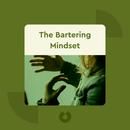The Bartering Mindset: A Mostly Forgotten Framework for Mastering Your Next Negotiation
Your highlights:The monetary mind-set leads to a narrow-minded approach to negotiation.
When you come to the negotiation table with the monetary mind-set, you bring a set of assumptions with you. For one, you see yourself as one side of a conflict between parties with opposing objectives. You also assume that a better deal for one party inherently means a worse deal for the other. In most cases, this leads buyer and seller to seek a compromise, which helps avoid conflict but also means each party takes a smaller slice from a smaller pie.
28 August, 2019 08:53 Share
But what if we didn’t have to compromise when we negotiated? That’s where integrative behavior comes in. Integrative behavior aims to appease opposing parties’ mutual interests by using strategies such as trust building or information exchange. Using integrative behavior, we can widen the scope of our negotiations so that each party gets more rather than both parties meeting in the middle.
28 August, 2019 08:54 Share
We can observe the bartering mind-set in an idealized bartering economy.
Most of the time, Keith’s crops and produce meet the needs of his family’s modest lifestyle. However, when his daughter sprains her ankle, he needs to find a way to trade what he has in exchange for medical attention. So he heads to the market in a nearby town with a wagon full of goods to trade. Because Keith has to sell his goods in order to meet his needs, he implicitly sees himself as both a buyer and a seller. Experience has also taught him that doctors aren’t usually interested in his produce. So in order to get help for his daughter, he first has to trade his corn for iron, which doctors use for their medical instruments. In other words, Keith knows that he has to engage with many different people. But before he approaches anyone, he needs to get a feel for the market as a whole. That’s because he knows that everyone in it has a multitude of possible needs and offerings. Since he can only get a good deal if his trading partners get one as well, he has to be creative in identifying the most beneficial trading relationships. For example, an ironmonger might be willing to trade for less corn if a few eggs are included in the deal. With a broad understanding of the market, Keith is then ready to approach people. With his trading partners’ needs in mind, he’s able to talk to them, trusting them enough to state his needs and offerings and ask for theirs. By establishing trust, he won’t come off as dishonest if he decides that the terms of the deal won’t suffice.
28 August, 2019 08:56 Share
Like a person with a monetary mind-set, a barterer comes to a negotiation with a set of assumptions. To understand these, imagine a farmer who lives with his family on a prairie; let’s call him Keith.
28 August, 2019 08:57 Share
The first step a negotiator with a bartering mind-set takes is to define needs and offerings.
Once you’ve determined the answer, you can define the breadth of your needs by thinking about everything else you might require in order to meet that fundamental need. If you need the money for commuting costs, a raise might be just one route to solving the problem. You might need to buy a more fuel-efficient car or get a Costco membership to save on gas prices.
28 August, 2019 08:58 Share
First, you’ll want to take a look at what value you’re already providing to your negotiation partners. If this means your boss, make a list of the ways you bring value to the company. For example, perhaps you regularly hand in pristine reports thanks to your sharp analytical skills.
28 August, 2019 09:00 Share
Finally, you’ll want to take a look at what you potentially have to offer. Say your boss has been complaining about traveling so often. Could you offer to take on some of the projects that require him to travel? Or maybe there are others who would benefit from your skills – a contact in another department seeking to fill a position in which you would excel, for example.
28 August, 2019 09:01 Share
Define the full spectrum of your transaction partners and identify their potential needs and offerings.
That brings us to the second step: defining the full spectrum of your potential transaction partners. Here, once again, you’ll want to get creative to widen the scope of your possibilities.
28 August, 2019 09:02 Share
Once you’ve done the creative work of considering the full range of your prospective partners, the third step in cultivating the bartering mind-set is to map out their potential needs and offerings. In fact, you’ve already started to do this by thinking about what you have to offer. For example, in step one you established how bringing pastries to the local community establishes your café’s value. You could also easily figure out that your landlord wants timely rent, your customers want bottomless cups of coffee and your local movie theater might need referrals.
28 August, 2019 09:02 Share
Identify power partnerships by assessing relationships and the costs and benefits of trades.
There are three stages to predicting the power of relationships. The first stage is translating the needs and offerings that you’ve mapped out into specific trades. You can do this by making a chart, noting in one column how a partner will fulfill your needs with their offerings and in a second column how you could fulfill their needs with your offerings. So in the first column, you might note the possibility of increasing revenue by advertising before movies at the local theater. Then, in the second, note that your café could distribute fliers featuring the theater’s current program.
28 August, 2019 09:03 Share
In identifying the partners who will be most beneficial and affordable for you, you already have a head start on the third stage: assessing the holistic picture you’ve just created. Though there is no mathematical formula here, the best way to assess the information you have is to separate your partnerships into four categories: high benefit/low cost; high benefit/high cost; low benefit/low cost; and low benefit/high cost.
28 August, 2019 09:04 Share
if your café is branching out into a new partnership by advertising your shop and thus attracting new customers, local artists might be more interested in exhibiting their work with you in order to gain exposure. You might consider reaching out to them as well.
28 August, 2019 09:05 Share
Step five in cultivating a bartering mind-set is to seek out the most powerful potential partnerships.
But before you start making any offers, remember that at this point you’re not trying to secure a deal or even necessarily pave a path for one. Instead, you’re trying to uncover information in order to understand your partners and the market as a whole.
28 August, 2019 09:05 Share
You can do this using a five-step process: introducing yourself, bringing up your needs, meeting the other party’s needs, meeting your needs and concluding.
28 August, 2019 09:05 Share
You should then politely ask to talk about your needs once more, then elaborate on your ideas, framing your questions in terms of a potential trade. You could suggest something like providing him with pastries and printing coupons for his store on your café’s receipts, and ask if he would then consider advertising your café in the window of his store in return.
28 August, 2019 09:06 Share
Bridge the bartering mind-set with the monetary mind-set by using Multi-Issue Offers (MIOs).
Instead, integrate the bartering and monetary mind-sets smoothly; the simplest way to do this is with a multi-issue offer (MIO). Unlike single-issue offers (SIOs), in which you propose one issue at a time, MIOs address all negotiable issues at once. In your negotiation with the grocer, for example, the pastries, window signage and coupons would all be presented together in a single offer. Here’s what that offer might look like: In one column of your offer, you propose to deliver 500 pastries daily to the grocer, and print coupons for his business on your café’s receipts. In the next column, you state that in return, the grocer will give you $0.50 per pastry and a $500 monthly printing fee for the coupons, as well as hanging a sign for your café in his largest window.
28 August, 2019 09:07 Share
And if the grocer plays hardball and won’t accept an agreement that meets your needs? Well, because you incorporated a bartering mind-set into your discussion, you can walk away from the deal with the relationship healthy and intact. You’re then free to fall back on any of your four other potential partnerships, creating mutually beneficial arrangements that keep your business afloat while strengthening the relationships in your network.
28 August, 2019 09:08 Share
About the book:
The Bartering Mindset (2019) details a method for negotiation that applies the mind-set of bartering economies of the past, in which people traded goods and services to get what they needed, to today’s monetary economy. By breaking down the bartering mind-set into a five-step process, these blinks will help you cultivate a more sophisticated approach to negotiating.
About the author:
Brian C. Gunia is an associate professor at Johns Hopkins Carey Business School. His research focuses on how people can help their careers through ethical behavior, effective negotiation and sufficient sleep. His work has been published in journals including Academy of Management Journal and Journal of Applied Psychology.
Blinkist takes outstanding nonfiction books and distills their key insights into made-for-mobile book summaries that you can read in just 15 minutes. Learn something new every day - on your smartphone, tablet or PC.
blinkist.com








